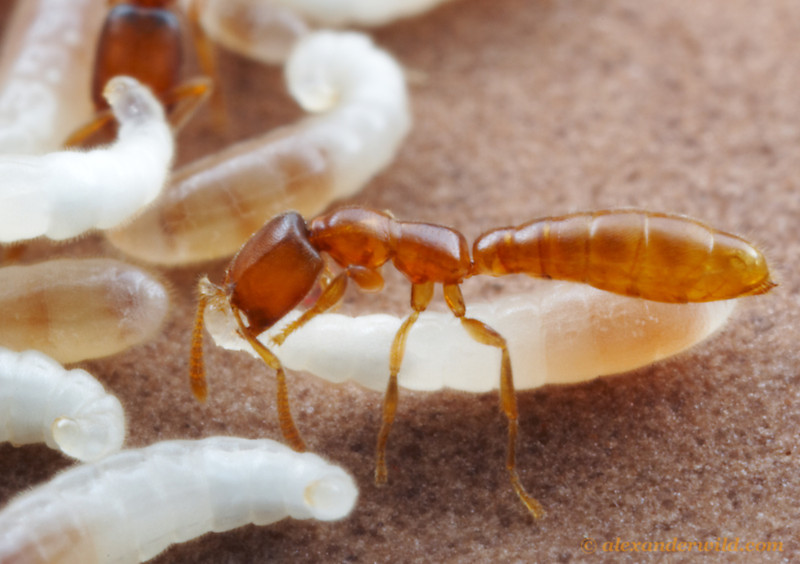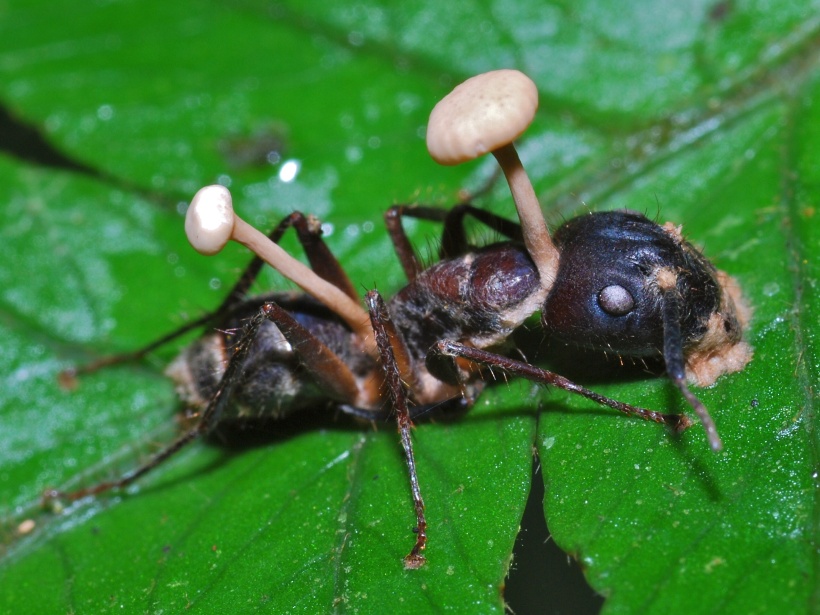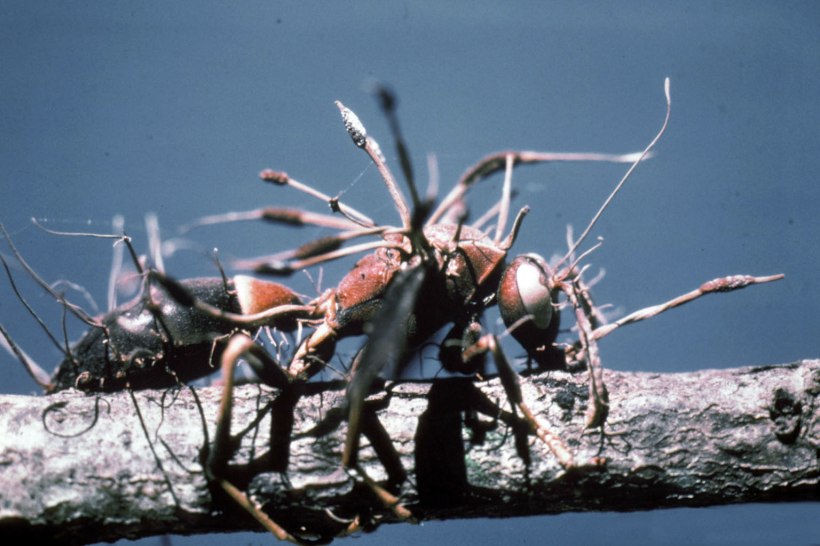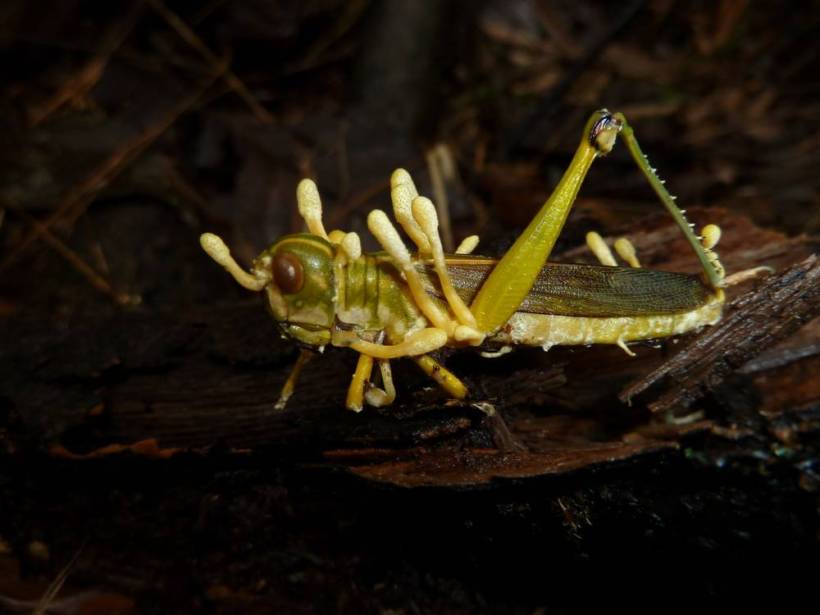After last week’s blog I had some very scary nightmares. I may be miles from the coast and even further from the ocean floor where the sea monsters I wrote about lurk, but no distance is enough for me to feel safe. There are Giant Squids with eyes the size of beach balls swimming around somewhere – how on earth are you supposed to relax?!
I’ve slept more soundly since I decided never to dip my toe in the ocean again. But unfortunately, there is just as much to be scared of on land too. Especially for scaredy cats like me.
I Want to Suck Your Blood (And Other Things You Should Never Say to Your Children)
If you’ve read some of my earlier blogs you’ll know I am fascinated by ants. Those teeny tiny insects are much more interesting than we give them credit for. But even I have to admit that some of them aren’t that friendly. None more so than the Dracula Ants.
Being named after the world’s most famous blood sucking vampire can never be a good thing. But these ants, found in Madagascar, take it to new creepy levels. Worker Dracula Ants go out each day to catch prey, which they bring back for their larvae to feast on. That’s all pretty normal. But it’s the peculiar feeding habits of the queen and workers which makes these insects the stuff of nightmares.
The workers chew holes in the colonies larvae and suck out their blood (or haemolymph to be scientific). Yes, you read that right. They eat the blood of their children.

Just before they develop into adults, the larvae are stuffed full of lovely, delicious haemolymph. And that’s when the worker ants get to feast.
And it just gets worse. After they’ve gorged themselves on their children’s haemolymph they regurgitate it up so they can feed it to the queen! And I thought being lactose intolerant and not being able to eat cheese was a bad enough diet. (Note: Not being able to eat cheese is one of the worst things to happen to a person. Never mind cannibalism).

This delightful act is called ‘non-destructive cannibalism’ – because it doesn’t kill their larvae. If you’re a young Dracula Ant having chunks chewed out of your side doesn’t kill you, it just leaves you a bit holey. Now that’s thoughtful parenting. Larvae that have fallen victim to this strange feeding technique do show some signs of puncture wounds and scarring across their bodies.
Although it can take an even worse turn if the colony is struggling for food. In these cases the starving workers will choose the most drained and scarred larvae and use them as an easy meal.
So just to summarise. Queen Dracula Ants feed off the blood of children. But only after worker ants have sicked it up first. I think we can all agree that their parenting skills leave a lot to be desired.
You’re Giving me a Right Headache
Don’t worry – ants don’t get away with such an appalling example of child care. They’ve got their own real-life horror film to contend with. It’s not just animals that are keeping me up at night. For ants, their living nightmare comes in the form of a parasitic fungus, called Cordyceps. You know the stomach scene in Alien? Well this is the HD 3D all singing all dancing version for the insects of this world. In fact, these fungi can wipe out whole colonies without much effort at all.
When the spores of the Cordyceps land on insects, such as ants, they attack them from the inside out – growing inside their non-vital organs to replace the ant’s own tissue. Eventually the fruiting body of the fungus erupts through the back of the ant’s neck. A thin fungal spike begins growing straight through the ant’s head. Eek.

And some of these parasitic fungi get even more impressive. They brain wash the ants they infect too and change their behaviour. They alter the chemicals in the ant’s brain and cause them to climb upwards until they grip the tip of the plant. This has been coined the ‘death grip.’ (Sounds warm and fuzzy to me.) And there’s a very good reason for this. The higher the ant goes before the delightful fungus bursts out of its head, the higher up the fungus is. And this means it can spread its spores even further – infecting even more ants and starting the terrifying process all over again.

Cordyceps are so devastating to ant colonies that once infected workers start showing signs of being brain washed, their nest mates will dump them far, far away from the nest. Talk about taking care of your own, never leave an ant behind etc etc… And it’s not just ants that need to protect themselves. There are thousands of different types of Cordycep and each one is specialized to infect one species! There’s no denying that’s impressive.

I’m really sorry to say that apparently it’s not safe on dry land either. But I read a lot about animals and there’s one thing that crops up time and time again. ‘These animals are so successful they’ve colonised nearly all areas of the globe, except high altitudes.’ So I think that means there’s only one thing to do.
Run for the hills whilst you still can.
